Once Upon A Mass Grave In Bhagalpur
Photo Essay By Javed Iqbal
04 January, 2015
Moonchasing.com
In October and November of 2014, the 25 year anniversary of the communal violence in Bhagalpur went by like a whisper
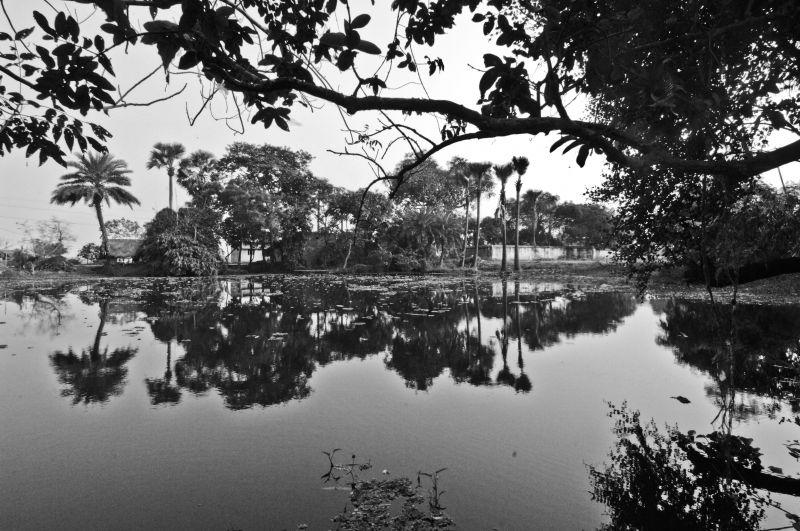
In India, massacres aren’t forgotten, they’re nationally integrated into collective amnesia. In October 1989, Parbatti, a locality in Bhagalpur town in Bihar, saw a well full of bodies cut into pieces, which local reporters were quick to announce were the bodies of Hindu students murdered by Muslim mobs, when they were eventually identified as the family members of Mohammed Javed. All twelve of them. There were never any ‘200 students murdered’; that was a rumour, for which the 1995 Riots Inquiry Commission Report by Justices Ram Chandra Prasad Sinha and S Shamsul Hasan explicitly blamed the administration, the press and the police for disseminating false information in an already communalized situation.
What happened on the 24th of October 1989, one afternoon in Bhagalpur town, could be described as a riot but what followed for the next month was nothing but an organized massacre of one group.
For weeks in Bhagalpur, there were preparations made for the Ram Janmabhoomi. An active Vishwa Hindu Parishad was conducting collections of bricks, with eet poojas across the district. All were to converge on the 24th of October for a Ramshila procession in Bhagalpur town. The situation was already communalized, with police encounters of Muslim criminals, a murder of a Muslim autorickshawalla, skirmishes over Moharram and Dusehra, resentment against beef eating, and a brewing gang war between what were described as Muslim and Hindu gangs, politically patronized and vying for control over Bhagalpur, which had a strong aspirant Muslim middle class. And it was under this backdrop that the administration and the police allowed the Ramshila procession to march through Tartarpur, a Muslim locality, where they were screaming slogans like ‘Baccha baccha ram ka, baki sab haram ka.(We are all children of Ram, the rest are all illegitimate) and ‘Jai Ma Kali, karo Tartarpur Khali (Praise Kali, goddess of destruction, empty Taratpur).’
Around the Muslim English School at Tartarpur, there were bombs and brickbats allegedly thrown onto the procession, and then it was bedlam.
According to the Inquiry report of 1995:
“There could be miscreants who might be Muslims or Hindus or both. The total analysis of the evidence certainly creates an aura of doubt over the whole episode notwithstanding the real evidence. It may be some miscreants of doubtful communal hue may have thrown bombs, some stones, and crackers to create mayhem but nothing more can be said.’
‘In the ultimate analysis we feel that the first bombing from the Muslim school appears to be doubtful, except some miscreants may have thrown some missiles and crackers from somewhere in the vicinity to create mayhem as stated above.’
It didn’t matter then. The local press and parts of the national press spread the news even though there was also no clear evidence that bombs were thrown onto the ‘Ramshila’ procession of ‘bhajan singing peaceful marchers’. The Commission would point out the lack of injuries that could be caused by shrapnel or fire; as for the peaceful marchers, many witnesses such as Kapildev Mandal pointed out that the procession was led by the Vishwa Hindu Parishad, the RSS, the Bajrang Dal, that was armed with swords, lathis, spears and pharsans. Kapildev sticks to his testimony even today, but like many others, refuses to name the people he saw in the procession.
Over the next few weeks, organized mobs of thousands would burn over 250 villages down, and mass killings would take place across the district, with the official dead around a thousand (with 90% Muslim), with some estimates that the number was higher. Two villages, Logain with around 118 dead and Chanderi with around 70 dead, would receive decent press coverage over the years, and with strong witnesses they would see prosecutions over a decade and more later. As per documents maintained by a businessman in Bhagalpur, there were also the killings at Bhatoriya, which had 85 dead, Rasalpur, with 30 dead, Padghari with 27 dead, Chajghora with 25 dead, and Silampur-Amanpur with 77 dead. All of these killings saw prosecutions, bails, and settled cases with killers roaming free.
There was also a pattern around Bhagalpur: the high death tolls were all indicative of people huddled together, en masse, in a house where they felt they would be secure, when the mob would descend upon them. Elsewhere the killings were random and unplanned – the murder of passengers thrown off trains coming into Bhagalpur, acts perpetrated by both Muslim and Hindu gangs according to Deepak Kumar Mandal, a member of the Socialist Unity Center of India. Others mention how the displaced Hindus settled into Ramnagar and the displaced Muslims settled into Islamnagar, yet no one seemed to know where those villages/localities are.
Everyone has a story of their own, one story about what happened, where they were, whether they ran, or whether they stood their ground, and when it comes to those who were responsible for the riots and pogroms, unanimously two names always feature in every conversation: Kameshwar Yadav who is now in prison and Mahadeo Singh who has passed away.
It is an open secret that Kameshwar Yadav, one of the main accused of multiple killings across the district, was not just patronized by the Vishwa Hindu Parishad on whose support he ran for the assembly seat for Nathnagar in 1990 on a Hindu Mahasabha ticket, but he was also protected by Lalu Prasad Yadav for more than a decade after the riots. It was only Nitish Kumar’s government that started to open these so-called cold cases, that had him prosecuted, that had Bhagalpur shut down with protests against his arrest, for four days. Yet many of the accused in other cases still roam free. It is also an open secret that many of the Muslims who faced violence in the riots voted for Shanawaz Hussain of the Bharatiya Janta Party, for two Lok Sabha terms in a row, but abandoned him on his third for he hadn’t fulfilled promises they hoped he would fulfill. In the 2014 Lok Sabha elections, he lost by 9,485 votes to Rashtriya Janta Dal’s Bulu Mandal.
His fortunes were further scuttled by businessman Aman Khan, who has been leading, and organizing protests for proper compensation for the riot victims, both Hindu and Muslim, and claims it was his work that got Nitish Kumar’s government to release funds for the families of those killed. He boasts that his house has hosted the likes of Rabri Devi to Nitish Kumar, and that he got people to vote for Shanawaz Hussain for two terms and abandoned him on the third for he didn’t work for the people. He had shifted to Upendra Kushwaha’s Rashtriya Lok Samata Party but after he joined Narendra Modi, he claims, ‘Humne usko tata bye bye kar diya.’ (then I left his party)
It is an open secret that Bhagalpur is a violently communal society, that the wounds of 1989 still define social and economic parameters, a society of communities drawn across religious lines, and the myths that spread in 1989 are still parts of two parallel collective consciousnesses. There are those who can forget and those who have no choice but to remember: the haves and the have-nots of memory, the upstairs-downstairs of nostalgia. The myths have been integrated into the mainstream, and like an inconvenience, the memory of the acts of killing, the loss of loved ones, continue to challenge the myths. Yet, there is no public space, no debate, no conversation; it’s business as usual.
There was a small event held in Bhagalpur town in October to remember what had happened, but it was almost a private affair, only a handful of victims were aware of it.
***
Professor Vilakshan who teaches Ambedkarite thought in Bhagalpur was then part of a leftwing student movement. He remembers the day he confronted a ‘Hindu’ mob that was congregating in Bhagalpur: ‘Why are you spreading the riots? Who gave you this money? Who will benefit? The upper-caste people, the Rajput-Brahmins and the Bhumihars, nothing will happen to them. Aur yeh Musalman kaun hai? Un mein se 90% Musalman hum hi logo mein se, hamare quam se, in loge kabhi hum logo ko yeh samaan nahi diya, who musalman ban gaye. Aap unko maar ne jaa rahe ho?’ (And who are these Muslims? These are people from our own, who left Hinduism because they never got anything from it. And you’re going to kill them?)
He eventually realized that it was Mahadeo Singh who had organized the people. ‘Mahadeo Singh, was a man of all parties, but in the beginning, he was mostly with the Congress. He used to organize dacoits, and on the silk business, he and his people had the biggest competition with Muslim businesses.’
Whatever semblance of justice there was escaped Mahadeo Singh, a man known for his involvement in the riots. The then Superintendent of Police Dwivedi who was also indicted by the First Commission of Enquiry is currently Additional Director General of Wireless and Technical services. During the peak of the riots, he was about to be transferred out of Bhagalpur just on the onset of the riots, a decision made by then Prime Minister Rajiv Gandhi; but after protests by the plainclothes police, Vishwa Hindu Parishad and other members of the Sangh Parivar, that decision was overturned.
***
To the survivors of 1989, the memories are clear, the names of lost ones etched painfully, the desire for apt compensation is as strong as a desire for justice; a hopeless hope. The report from another Riots Inquiry Commission headed by Justice NN Singh was meant to engage with those realities but has, till date, only come up with extensions. Most speak with the realization of how the year ruined them and their families, with the displacement, the disenfranchisement: the ghettoisation that has led to a continuation of a communal society – just a month ago, a moharram procession in Gowradi led to clashes, and inter-religious couples continue to face the wrath from the so-called ‘love-jihad’ brigade.
The television media is quick to remind them of the Sikh pogrom of 1984 and the violence in Gujarat of 2002 yet the absence of their tragedy has not gone unnoticed to them. Not a single person said that the rioters, the killers, weren’t their neighbours; yet most wouldn’t wish to identify them. There is a fear to speak, to talk about what the present tense surrounds them with. With all the recent upsurges of ‘Love Jihad’, any conversation about inter-religious marriages has witnesses and survivors who wish that I turn the recorder off.
Write about it, but don’t take my name.
M says, ‘In Bhagalpur, just two months ago, there were people who came from Ranchi and Hyderabad who beat up a Muslim boy in Nathnagar for marrying a Hindu girl.’
‘People were marrying of their own accord,’ he says, ‘but they call it Love Jihad… and there’s so much politics about it, so much politics, you wouldn’t believe.’
‘If there were inter-religious marriages, there would never be any riots.’
There is even a stronger history to it, just in 1995, a few years after the riots, a young Muslim man from a known Congress family was shot at the chowk for marrying a Rajput girl from a prominent family of Bhagalpur. And the re-run of the riot his mother feared, was then averted when the Rajput girl went back to her home. His killers were never punished, and they continue to be neighbours of the only Muslim house in the locality which is falling apart.
‘I don’t know why he married her, or why she caught my son,’ Said his mother.
After the Allahabad High Court judgement on the Babri Masjid issue, the administration was swift to order the police to deploy themselves around Bhagalpur, and seven policemen stayed at their house for protection. Nothing happened that day.
‘It were the Muslims who’re to blame for what happened.’ Said her daughter about 1989, ‘Why did they throw bombs at the Ramshila procession?’
The myths around what happened in 1989 still permeate most conversations; there were bombs, and the Congress who were in power were entirely to blame, and it destroyed them entirely. They haven’t won a single seat since 1989.
Yet for some, the memory of what happened continues to be a thorn to the mainstream narrative.
Parbatti
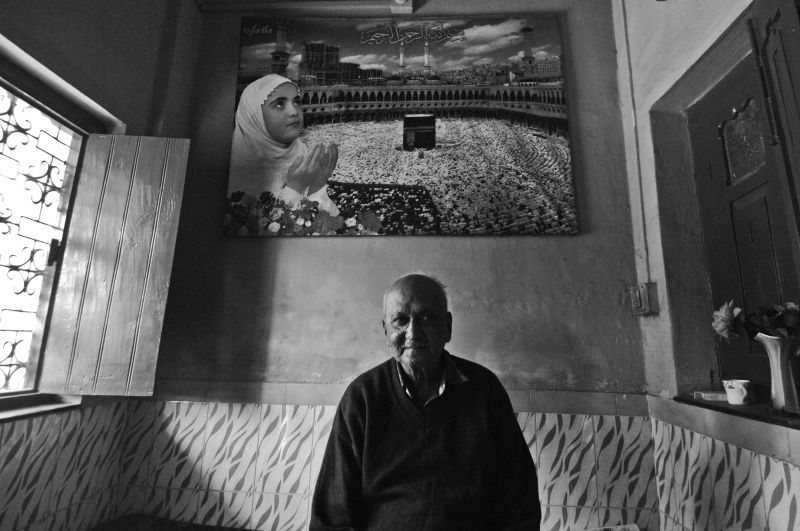
Wasif Ali, a retired professor
‘I still remember what the BSF commander said when we found my father’s body,’ says Wasif Ali, (82), a retired professor from the Agricultural University of Bhagalpur.
Wasif Ali’s family started to leave Parbatti a full month before the full-blown riots of October 24th and the pogrom that followed. He himself barely escaped being caught by a mob a few weeks earlier. ‘Laal scooter walla jaa raha hai, maar usko,’ He recalls, as a mob that had congregated at Parbatti tried to accost him as he was travelling by. That was all before the 24th, and yet the administration didn’t take any preventive actions.
It has now been three months since he got a stroke, sixteen years since he retired from teaching, and twenty five years he fought for justice in whichever way he can. It took him a mere five minutes to begin telling the story of the riots, with each pause between words like little flashbacks to an imagery of trauma only he had seen. He speaks in a calm baritone, slowly, in impeccable Urdu, over the sounds of a television report talking about Narendra Modi and a kitten meowing intermittently.
He recalls how everything was turning communal a whole month before October. How the Shila pujan started in Parbatti, how bricks were being collected for the Ram Mandir. How Parbatti was the ‘adda’ of the RSS and from his youth, he used to see RSS drills in Parbatti. How there was an explosion in Parbatti in someone’s home in October 1989 and how they surmised that there were preparations for something. How there were unknown persons coming and going into Parbatti. How he had to convince his family members to leave Parbatti. How they plied all that they could save on vehicles and leave the morning itself of the 24th of October. How hard it was for him to convince his 80 year old father, Syed Anwar Ali, a retired teacher, to leave. How Kameshwar Yadav who led the riots was a man who used to come and take blessings from his father. How he told his father that there may be riots in other areas but nothing would happen in Parbatti. How the people who were rioting and attacking them, they and their anger, were all from the neighborhood and that they were ‘misled’ by their leaders. How the ‘Hindus’ who would speak to him in a friendly manner were all secretly ‘BJP-minded’ and communal. How his neighbour Mohammed Javed’s entire family, who lived behind his house was entirely killed, and chopped to pieces. How the police never took his statement of the riots. How after the riots all 27 Muslim families left Parbatti and how he sold his house and land to a man called Jaiswal for half the price. Today they are building a lodge over parts of his land, the rest is still a heap of rubble.
But it was four days after the riots, when Ismail, who stayed back in the mohalla with Wasif’s father came running to where they were hiding. A mob had attacked the houses and they had to leap from the roof to escape. One man with Ismail was caught and killed there itself. Ismail said he had to leave Wasif’s father.
Wasif was sure his father was killed.
On the 27th of October, the BSF eventually entered their safe house, and asked everyone to stand with their hands up. They quickly noticed that there were only old people and women and informed them that they were there to save them. The soldier was identified as Assistant Commander Rajender Singh who would eventually make a name for himself, saving hundreds of people, according to Wasif. But his first impression was different from what his legacy would become: he quickly began to inquire about a boy who had just given a journalist an interview that ‘hamara nana nani koh jalareh teh aur BSF walle ne kuch nahi kiya.’ (They were killing my grandparents but the BSF were doing nothing)
Wasif Ali said the boy was here, and that he wasn’t there anymore. The commander asked about the journalist, and after he found him, he asked him to delete everything on his video recorder.
This altercation led to fear, and in the middle of all of this, a sombre Wasif Ali, managed to convince the BSF to take him to his house. Wasif wanted to find his father. There was a curfew in place, it was only between 1:00pm and 2:00pm that one could venture out.
Eventually Rajender Singh and a driver drove Wasif to Parbatti. Many houses were burnt down and there was smoke coming from his house as well. His entire library with a collection of Urdu and English literature was burnt to the ground, all his books destroyed.
They eventually entered the room where his father should’ve been. He was not there.
‘Ek Toshak tha’, Recalled Wasif, ‘Aur ek plastic ka bedsheet, sab khoon mein latpat tha.’ (there was a mattress, and a plastic bedsheet covered in blood)
The mattress folded into itself, had something between it.
‘Kholo isko.’ (Open it) The BSF commander said.
‘Humse nahi khulega.’ (I can’t do it) Replied Wasif. ‘Toh bichare ne aapne se khola, aur puure khoon se chaatawa tha .’ (So the poor man opened it himself and the whole thing was flowing in blood)
‘Toh uska yeh sentence tah, abhi bhi yaad hai, chabees barass ho gaye.’ Said Wasif, ‘Usne kaha, ‘in logo ne, ne kissi bacche, na aurat, na buddhe, kissi par rahem nahi kiya, sabko maar diya.’
(it was then that he said, I still remember even 25 years later, ‘that these people, had no mercy for either children, women or old people, they kill everyone.’)
‘Aur dekhna hai?’ He would ask Wasif, who said there was really nothing, it was time to go back. But it was before leaving that a dog started to approach them. It was his family’s pet dog, he hadn’t eaten in four days and was famished.
‘Have you met Rajender Singh since the riots?’ I asked.
‘No,’ He said, ‘I heard he was killed in an encounter in Kashmir.’
Wasif would then make a call and ask his neighbour in 1989 Mohammed Javed to come and meet me.
Parbatti – Part II
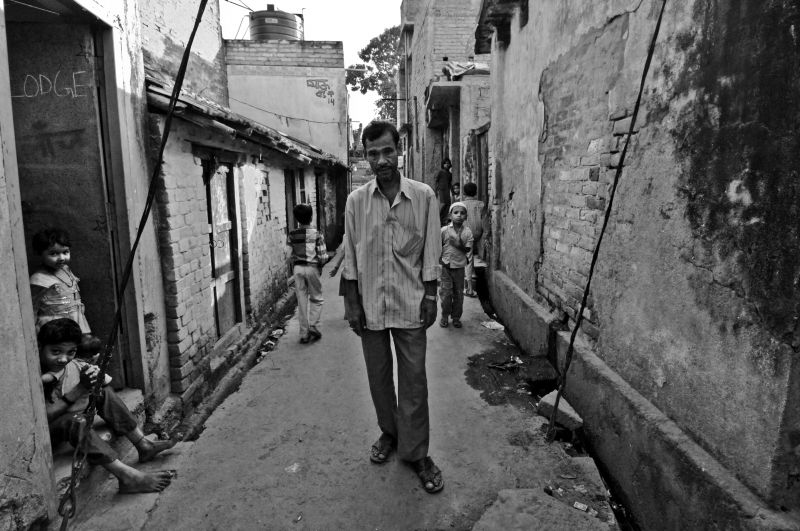
Mohammed Javed, who lost 12 members of his family in Parbatti
Mohammed Javed lost 12 members of his family when the riot hit Parbatti, a mixed neighbourhood in Bhagalpur town. He had just managed to escape and had no idea what had happened to his family for the next five days. His pregnant wife left a day earlier but she passed away five years ago of illness.
Nasim Khan (60), his father, Bibi Jahana (48) his mother, his elder brother Feroze Khan (30), brother Shourab (28), his youngest brother Babbar (13), sisters in law, Ruksana (22) and Ishrat (22), and his nephews and nieces, Khusnodi (12), Aurangzeb (8), Tinku (6), Shabnam (1) and Gudiya (3), were all found dead in a well, and the bodies and parts of bodies were taken away by the BSF.
Javed recalled each name, nonchalantly, without emotion.
Just a few days ago, in another part of the country in a village called Javkheda in Maharashtra, three of a family were chopped to pieces and their bodies thrown into the fields.
Strange fruit in the paddy field.
Javed never buried his own in 1989.
Today he is one of the only inhabitants of 1989 who still visits his old neighbourhood, too look after the ‘mazhaar’, as the lands and houses that once belonged to Muslims make way for new construction sites, and the graveyard that buried generations is now a grazing field for livestock.
‘Padho Goswami, Sulcha Mandal, I knew they were part of the mob that chased me.’ Said Javed.
His neighbours Bibi Ishrat Jahan lost her husband Mohd Ilyaz when he went looking for her in the riots, and Shahana Begum’s husband was rounded up in a house along with 38 other men where they were hiding from the riots. On this incident the Commission of Inquiry comments: ‘The manner in which the search was conducted, was reminiscent of the searches in occupied Europe by the Nazis.’
All 38 were taken to a petrol station, beaten repeatedly by the police for an hour, made to sit on their knees, deprived of water, and constantly abused by 20 policemen for inciting the riots and throwing bombs on the Ramshila procession. When five of the seriously injured were taken to the hospital, the doctor threatened to poison them, ‘zeher ka sui laga doh’, yet a sympathetic policeman drove them back to the police station and finally to Bhagalpur Central Jail.
Mohammed Ilyaz spent three months in jail and continued to fight the case on his own, while his family struggled to rebuild their lives after the arson at Parbatti.
Shahana Begum and Ishrat Jahan’s homes were burnt down in the riots and the government merely offered them Rs.5000 and Rs.3000 for their homes and livelihoods. Shahana rejected the compensation as her husband was in prison and they continue to live in expectation of proper compensation for their homes.
Parbatti today is split by a road, with one mixed community and one where the Muslims would eventually migrate and sell all their land for piecemeal. On the mixed community side of the road, the memories still run deep, and if you go across the road to the majority side, no one wishes to talk about 1989, it happened a long time ago.
‘We’re all families,’ Says Tuntun Mandal of Parbatti, ‘Who remembers what happened 25 years ago?’
Mohammed Javed’s face turns as he hears that. He moves through his old neighbourhood, pointing out his old home, greeting those who live there now. There is an incredible unease, as he enters what used to be the graveyard where there are remnants of barely two or three graves, the rest is a grazing field, there are dung cakes on the few structures left, there are massive ditches in the middle. Two men were grazing cattle, they knew Javed, they all greeted one another, but five minutes later Javed walks up to me and tells me that one of them, a man in his fifties, was part of the mob. The conversations are cordial, the body language distant: I asked every person who lives in Parbatti what they felt when they heard about what happened to Javed’s family. Only two out of ten people exhibit any emotion, shock or sadness, on hearing what had happened. Most would respond with, ‘Kya Karein? Mahol aisa tha, nahi bata sakte.’
(What to do? You know how it was then, can’t tell you much.)
Timoni
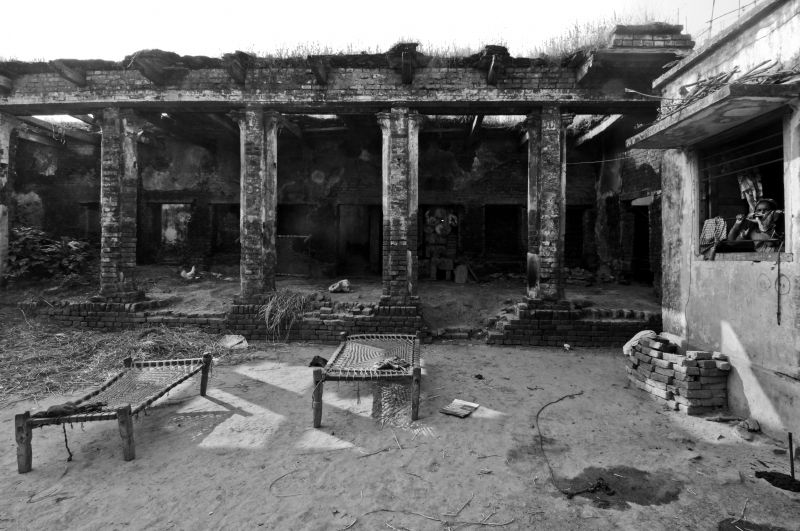
Kamroz Hodda Khan's house at Timoni, which he abandoned in 1989 itself
Timoni, pronounced Tamouni, is a village five kilometers away from Bhagalpur town and is described as where the ‘dabang’ Muslims, mostly Pathans live. In 1989, in the words of the late Asghar Ali Engineer, Grim Tragedy of the Bhagalpur Riots, written on February 10th 1990, in Economic and Political Weekly,
“Every house was gutted and looted of anything that was there to loot by a mob reportedly 10,000 strong. Even wooden doors and window frames have been removed. The death toll here was however low. According to Nathnagar circle officer Mohammad Rahmatullah, 11 people lost their lives at the hands of the mob which had attacked the village. The reason for relatively low toll was that most old men, women and children had been evacuated from Timoni on the night of October 25. The villagers reportedly repulsed the attack with the help of two licensed guns. They knew that a bigger attack would be mounted; so taking advantage of darkness, women and children and old men were sent to neighbouring villages.”
The dead in Timoni were mostly the old and infirm who could not, or would not escape: Fahima Khatoon (80), Asghari Khatoon (78), Qiayama Khatoon (60), Fazlur Rahman Khan(70), Bibi Mushtari (75), Fatma Khatoon (60), Bibi Maryam (75) and then Munir Khan (13), Mohd Farooque (40), Shamshad Ali (48) and Zahira Khatoon (30).
Mohammed Mehmoud is a 30 year old activist who was born in Timoni and has spent his last four years working for justice for the victims of the riots. Yet the Non-Government Organization that he worked for has run out of funding. He was told that there were licensed guns but they weren’t fired, as there weren’t enough bullets. The attack was organized by people who had come from Parbatti and the ringleaders from Timoni were all from the Koeri caste. Preparations started a month early as collections for the Shila pujan had come to Timoni and meetings were held at night across the vicinity. Two of the ringleaders, Kaleshwar Marrar (now deceased) and Budep Choudhary Singh apparently had 25 bigha and 30 bigha land, they were arrested and eventually released on bail given by the High Court in 2002. Their families are currently close to the Bharatiya Janta Party.
‘Most people who were involved in the riot, were working with our families.’ Recalls Mahmoud, who recalls that if one goes back a hundred years, they would’ve found cases of bonded labour in Timoni, from both Hindu and Muslims families.
Today there are only a handful of Muslim families who left Timoni, the rest have rebuilt their homes and lives but quite a few have refused to rebuild some parts of their broken homes, in expectance of a compensation they feel they deserve. Mahmoud mentions how the two communities do meet and work sometimes, but the minute there is talk about the Hindu-Muslim issue, the hate and anger comes to the fore. It hasn’t helped that there has been a long standing dispute over land grabbing of the graveyard which only came to status quo when the administration and the police got involved.
‘Before 1989, and after 1989, were there any inter-religious marriages in Timoni?’ I ask.
‘None.’
Mahmoud recalls that since the riots he was one of the first Muslims of Timoni who decided to go for the shaadi baraat for a Hindu friend in the village of Amanpour around five years ago. He recalls that his mother held his hand and asked him not to go, that the neighbours came out of the house and tried and convince him not to go. Yet he did, and exclaims that he was welcomed by the families in Amanpour village, and would keep getting anxious calls from home.
‘So I was the first.’
Logain
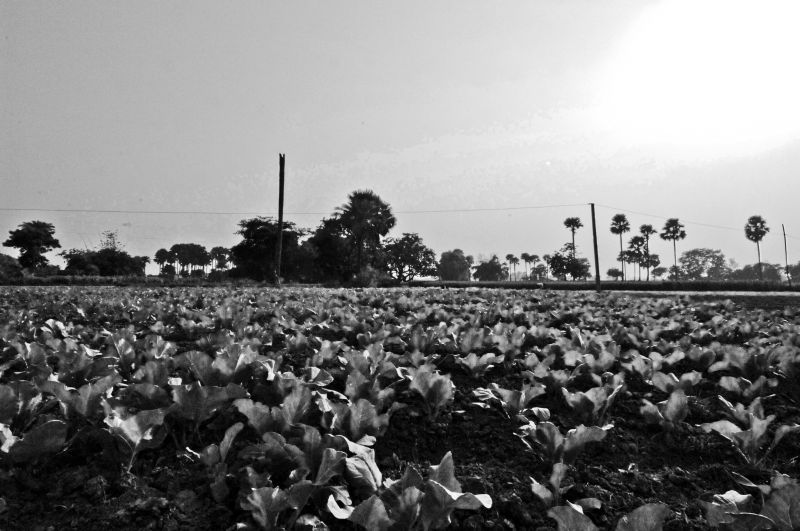
The cauliflower fields of Logain; where in 1989 it was said that the perpetrators of the massacre planted cauliflower over one of the mass graves in order to hide the bodies.
105 bodies were dug out of Logain, a whole 22 days after they were killed. Some estimate the entire death toll was 118, others 128.
The story of what happened in Logain has been told often, almost as many times as the number of people who survived what happened. There is only one Muslim family left in Logain, and Mohammed Naseem says that just the other day his Koeri neighbours threatened to cut him to pieces over a dispute over land. Twenty five years ago, he lost his wife Bibi Najmoon (30) and his two children Tetri (3) and Ghufran (5), a brother Mohd Rahees (35), and other relatives Daulat Bibi (40), Mohd Moin (25) and Bhoko (8) Mukeem (7) Segun (18) and Begun (17).
He had managed to escape when he saw the mobs approaching, famously led by Assistant Sub-Inspector Ram Chandra Singh from Jagdishpur police station, who would be sentenced to life imprisonment for his role in the killings. Many claim his trial was politically motivated as only the two well-known killings (Logain and Chanderi), and Kameshwar Yadav’s murder case, led to prosecutions.
It was only 22 days later when the authorities were informed by Sitabi Harijan (70) about where the bodies were buried. In one survey, from the collector’s office that lists the dead, there were 52 children out of the 105 dead whose bodies were buried in different parts of Logain. Mani Khan, a successful businessman in Bhagalpur town, whose house would become a relief camp for over 10,000 people remembered what he saw when the bodies were being recovered from Logain, ‘There were piles of little ribbons, chotte chotte chotthiya.’
‘Gehun ke keth mein 10 laashe teh,’ Said Naseem, ‘Nadi mein ek, uske purab ke keth mein 35 aur tad ke pase mein 40, baki sab agal bagal mein.’
(there were 10 bodies in the wheat fields, one in the river, in the east of that there were 25 and near that there were 40, the rest here and there.)
Mohammed Naseem also confirmed that on one mass grave, the miscreants had planted cauliflower, one of the more known details of the Bhagalpur riots. ‘Aur sab badan mein keede keede teh.’
Right outside his house, there are fields and fields of cauliflowers: it doesn’t escape the fact that it was exactly in this season 25 years ago that the killings took place and the planting of cauliflower took place.
His mother Jalebi Khatoon, who married in the partition riots of 1946, claims to be aged over ninety right now. She asserts in her slow voice that both people from Logain and from outside were responsible for the killings. There are still strong memories, how many sons did she lose? How many people have come to see them? Logain was a village of Sheikh Muslims, all descended from one man’s family, Malin Marrar, who was Jalebi’s grandfather, who had bought it from a zamindar Gadi Naseem who lived in Bhagalpur. Lands that were bought over a 100 years ago by Muslims, would, after the riots, be sold for Rs.5,000 or Rs.10,000, for ‘ek bigha’ for what would now cost around Rs.1,00,000. Today in Logain, there are 125 Koeri families, 70 Kumhaar families, and 12 Ravidas families. Sarjug Das, Naseem’s neighbour, is from a Ravidas family, who claims all 12 families of his caste come under the Below Poverty Line, that they only get about 10-12 days of work a month and that they have very little land, about 10 to 5 katha land.
The graveyard at Logain is buried in an unkempt overgrowth. Naseem’s family and the remnants of the graveyard is all that is left of what was once a community described as meek and innocent. People in Bhagalpur compare them to those in Timoni, the ‘dabang’ Muslims, as those in Logain, were too innocent, and too trusting, all of them stayed in one house, believing nothing would happen to them, that their neighbours from Hemra, Mirnagar and Amhara would not harm them. That the OBC’s of the Mandal caste in the village would not kill them. Over a dozen of them were convicted in 2007.
But they’re not living in the illusion of safety anymore.
‘Inko kaath doh, bolte yeh log, kaatho!’ Said Jalebi, her voice in distress, ‘Hamare eetha ko yeh log utha teh rehte, inko kaun rokega?’
(Cut them down they say, cut them! They steal our bricks every now and then, who will stop them?)
Chanderi
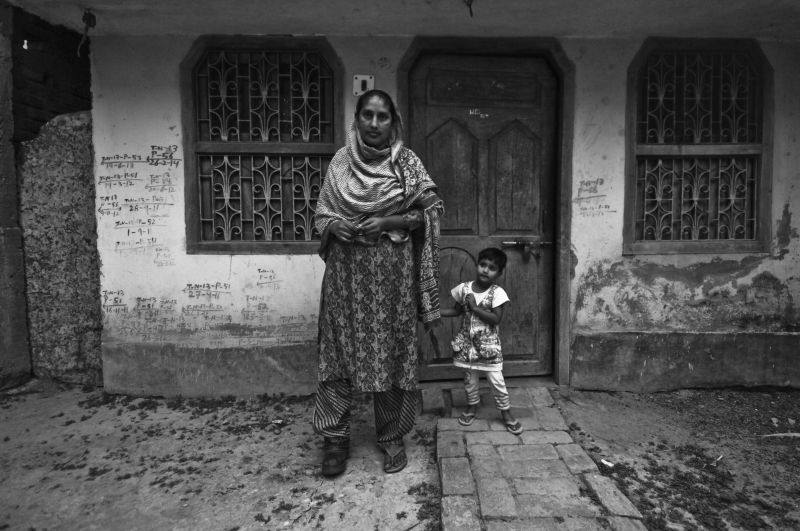
Mallika Begum asks how many interviews she will have to give before something happens. She was the sole survivor of the Chanderi massacre and was merely 14 years old when she testified in the Patna High Court, when she became one of the most known survivors of the riots and pogroms of Bhagalpur. It wasn’t just that there were 65 or 58 or 70 people killed in her village, but the role of the Army and the police had come under massive criticism and scrutiny.
It was the 26th of October, when the mobs had begun to congregate and the killings began but the majority of the village hid in the house of Minnat Mian, where the mob would throw bricks, stones and try to barge in. The District Magistrate would come and go, there was a police presence as well, and it was later in the night that the Jammu And Kashmir Light Infantry Regiment led by Major P.S. Virk had arrived and the mob had dissipated. ‘Darro math, hum maarne walle nahi hai, hum bachane walle hai.’ (We’re not the ones who kill, but those who save) They re-assured the people in the house. They positioned themselves around the area but would leave later in the night, after a call from the police station had asked them to investigate other incidents in the locality.
Little by little, in the dead of night, hateful slogans were heard and the mob started to reappear. By the 27th morning, the villagers in the mob, and policemen and they who pretended to be the police, managed to convince all the people huddled together to come out. They shepherded the procession of people: women and children in the front, the men behind, to the road where eventually they were cornered by all four sides, by people armed with swords, knives and axes, and the killing instantly began. There were eighteen children and at least four infants. Nineteen counting Mallika.
‘Aage se bada, aage par kaatna shoori kiya, piche se bada, piche se katna shoori kiya.’ Recalls Mallika, ‘Ek aadmi ko teen-char tukda kiya, gala utara, peth katha, gala kaatha, peth katha.’
(If you moved ahead, they cut you there, if you moved back, they cut you there. Each person was cut three-four times, at the neck, the stomach, or the neck or the stomach.)
Twenty to thirty people were killed there itself. Mallika describes how she went and hid in the kitchen of a nearby house. But was eventually dragged out, and taken with the rest to a nearby pond where the killing started again and there would be no one else but Mallika. She would run, she would try and hide, but they managed to seriously cut her right foot, before she jumped into the pond of bodies.
It was then, around 9:38 am, when the army reappeared again, and the mob moved back in fear. It was Major Virk who noticed the bodies in the pond, and then recognized they were the same people they had given safety to at night. Mallika was barely conscious, but was eventually taken out of the pond and taken to the hospital.
‘Jaise lawaris laashe pheke jaate the, use tara mera perr pheka gaya.’ She recalls.
(Just like they throw unidentified bodies away, that’s how they threw my severed foot away)
‘Why was there so much hate?’ I asked.
‘They didn’t have any hatred for us, it was hatred for all Muslims.’ She says, ‘Did you take money? Did you just want to kill us?’ She would say, adding in detail, in a sombre stoicism, the story of her attackers: Most of the people who were convicted worked in the nearby Agriculture University. Most of the people who attacked them, were in their early twenties, they were mostly married. They were people who never listened to anyone, they were a bit ‘dabang’. I knew a lot of people from the village, since childhood, and they were a lot of good people too, who were in the mob, who I never named. The late Jaldhar Yadav tried to save some people but no one would heed his advice.
She describes how there were some people she never knew, who just watched the killings take place, standing astray, ominously watching with intent.
Now twenty five years later, the sole witness of the more high profile cases of the riots wonders where the promises of the government job were. She worked as an informal worker in the District Magistrate’s office for a few years before being asked to leave. Yet unlike others, Mallika is also an activist, a fighter.
Like you do your reporting, for four years even I have done this with the victims of Bhagalpur, she says. A few years ago, she even attended a conference for justice for the victims and survivors of Gujarat 2002. ‘Mohafza uska haq hai, aur nyay uska adhikar hai.’ (they are entitled to compensation and justice is their right) Mallika says, when asked about her impressions of the victims and survivors of Gujarat 2002. She felt there were similarities between what happened in 2002 in Gujarat and in 1989 in Bhagalpur. Justice is slow and compensation is lacking, you destroy lives and give nothing. In the convention, she took the microphone and gave a speech and was approached by many women who lived through similar experiences as hers. Yes, we shall keep fighting for justice, they apparently told her.
She speaks about Zaheera Sheikh, and how her youth made her susceptible to pressure from both sides, to act as a witness, and to withstand threats. At this point, Mallika reminds herself that she too was young, and the threats and promises of money to let go of the case and withdraw her testimony would come to her every other day. They threatened that they’d throw a bomb at her at the court, they had tried to come and kill her at Mayaganj hospital itself. They visit her through the kingmakers of Bhagalpur, and try and buy her off. She would tell them that you give me my parents back, and I will let it be. Her grandfather who felt nothing would happen, who trusted them, was thrown into a well.
As for Major Virk, the man who also helped arrange a marriage of Mallika (to a soldier from Kashmir who would eventually abandon her), ‘Someone said, he was killed on the border somewhere, killed in Sikkim, the army people only told me. I know he looked at me as his daughter.’ She would say.
‘Did you ever ask Major Virk why he left that night?’
‘He said the SP Dwivedi had called him away.’
While Mallika was forgiving of Major Virk, the Commission Inquiry had strictly condemned his actions even after he had given reasons for why he left the village:
‘At 10.30 pm, the BDO and the officer in-charge of Sabaur police station, Kailash Chaudhary, came to the village. Major Virk later told the special ADM that he had left the village after these officers assured him that food and protection will be provided to the Muslims. It appears that no steps were taken to protect these people.’
‘We have no hesitation modifying our finding and say that the conduct of the police and paramilitary forces stationed amounted them to be abettor to the massacre and the conduct of Major Virk was absolutely irresponsible because after coming to know that the village was surrounded by massive mobs, he should have either hunted them down or rescued the Muslims collected in the house of Minnat Mian immediately and sent for further forces to effect rescue work.’
It’s been 25 years now and Mallika Begum has never gone back to Chanderi.
Nayabazaar
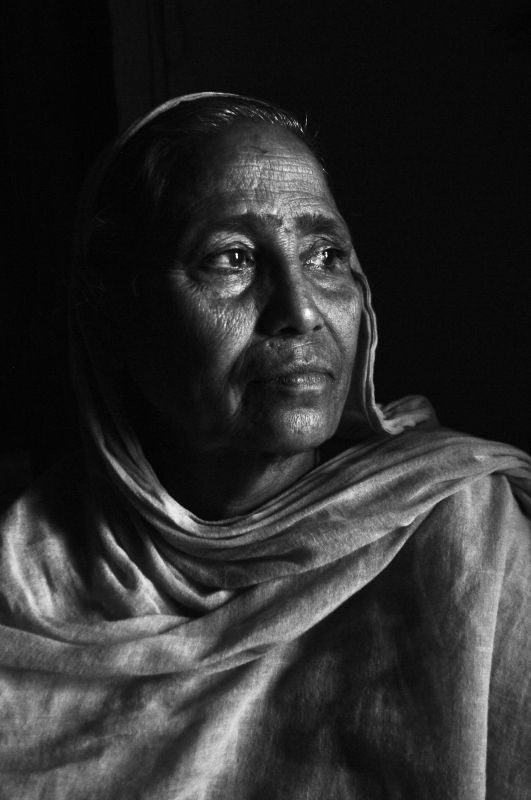
Bunni Begum
Nayabazaar is a slightly upmarket locality in Bhagalpur town. It is also the home of just a handful of Muslims, who have been living there for generations, and who were attacked on the 26th of October, 1989.
Sixty-five year old Bunni Begum only has eight fingers in her hand, two large scars on her right arm , her neck and her left shoulder and can only just use her arms. She lost her fingers trying to push the sword away from her neck.
On the 26th of October of 1989, she was attacked by people she knew but has till date has refused to identify. They left her for dead and had killed her elder sisters Tameezul Nisa (58), Chanda Begum (50) and their caretaker Sachin (15). Of the twenty people killed in Nayabazaar in that attack, eleven of them were children, five of them were women. All of them were hiding in a house of a Hindu leader Dhirender Kumar Singh Munna in Jamano Koti. Others, like her son Rupa Khan who was 20, was hidden by a ‘Brahmin’ family of Pratibha Sinha, a communist leader, and he survived the killings of 1989.
Bunni Begum reminds me about the number of journalists and activists she has met, one she just met a few days before. She speaks in a mix of humour or at times on the verge of tears. She allows me to read out the names of her friends, family and neighbours who lost their lives and she listens attentively. ‘Shanaz Begum (30), Sarwar Ali (41), Bibi Soni (31), Raza (12), Arif (8), Sadaf (2), Ahsan Mehdi, Yasmin Begum (28), Bottar (20) , Simpal Ali (3), Mr. Nasir Raza (40)…’
‘Nasir Raza zinda hai!’ She excitingly says. (Nasir Raza is alive!’)
‘Sorry, Mrs. Nazir Ali.’ I respond. She concurs sombrely.
‘Aur?’
‘Ghazala (13), Mehdi Raza (4), Tarique Raza (2), Shabina Raza (12), Sahina Raza (8), John Raza (4), Tameezul Nisa (58), Chanda Begum (50) , Sachin (15) aur Firoz Ali(20).’
‘Hamara naam nahi hai?’ She asks surprisingly. (My name is not there?)
‘Uhm…aap zinda hai.’ (You’re alive)
She bursts out laughing.
Eventually she begins to express how her family’s home was specifically targeted, ‘Log bolte teh yeh naag ka ghar hai.’ She says, ‘Sab neta hamare ghar aate teh, Bhagwat Jha se le kar.’
(They used to say this was a snake’s house, all the politicians use to come to us, from the Chief Minister to so many others)
Her husband had close ties with the Congress party, her son Rupa Khan (25) was a member of the National Students Union of India who would be murdered in 1995.
For the past few years, she has struggled to get a pension and compensation. She recently had a stroke in March and her medical bills were piling up, her home was disintegrating and those who want to buy her home only want to pay lower than the market rate. She is not eligible for compensation for her son and husband did not die during the riots and her nieces and nephews look after her. She had gone to every government, from Nitish Kumar’s to personally hand her application for compensation and support, to BJP’s Shahnawaz Hussain, but there was nothing.
‘Doh baar hamne Kamal chaap ko vote diya, kyuki Nitish ke Sarkar ne thoda saath diya dange pideeth ko.’ She says, ‘Lekin abhi kuch nahi.’
(We voted twice for BJP, for then during the alliance the Nitish government had done something for the victims of the riots, but now nothing)
When I ask her if I could take her photo, she instantly agrees, adjusts her shawl and instantly puts her hands up like she is about to get arrested.
‘Arre, aap kya kar rahei hai?’
She laughs.
It was then I realized that over the past 25 years, all the people from the administration to the journalists who came to her wanted a photograph of her with her mangled fingers. She showed me a photograph of her for the Jan Dhan Yojana, and it had her holding her hands up.
I took a portrait of her looking outside with the sliver of light coming from the door. She didn’t like it, it was too dark.
She then asked me to take a photo of her hands, then repeating, ‘ I can barely lift a glass of tea.’
Dariyapur
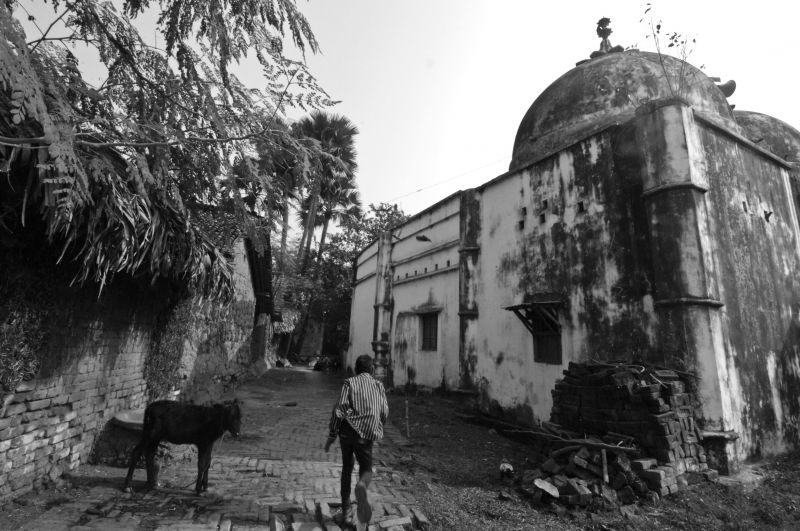
The Mosque in Dariyapur, where there were no riots and the mobs were held at bay
There were no riots nor pogroms in Dariyapur village under Nathnagar Police station, even though there were killings a mere two kilometres away from the village. Haji Mohammed Mahmoud Ansari was born in 1924 and lived most of his life in Dariyapur. During the riots, his house in Bhagalpur was burnt down and his son Aslam Ansari was killed near Kathon village when he was returning with a jamaat along with four other people who lived in Dariyapaur: Naseeruddin Ansari (17), Mohammed Rais (40), Jamaal Ansari (52) and Sikander Sheikh (50).
I met the 90 year old Haji Ansari at Bhagalpur town along with his grandson, they had just gone to meet a man who promised to continue the ‘andolan’ for compensation. After the riots, the government had just offered him Rs.5000 for his house which he refused. He had travelled over an hour, taking two share autorickshaws and had walked around 500 metres to get to them in the first place.
He points out that there was a peace committee that was in existence in his village long before the riots started: with Mahadeo Prasad Singh, Ghayanshyam Jha, Ishraful Sarpanch, Sarda Prasad Singh and Giat Ali Choudhary. Their village of Bhoonkars, Telis, and a handful of Rajput and Brahmin families were all involved in the handloom business and farming, the ratio of Muslim families were around half, to the Hindu families of all castes.
Shankar Singh whose father Mahadeo Prasad Singh was part of the peace committee claims that there they just didn’t let any of the ‘criminal elements’ enter their village.
‘What they did every day, was try and curtail the rumours,’ Said Shankar Singh, ‘If someone said that some Hindus were killed, we would go to the Hindu areas and say it wasn’t true, who told you that? How do you know? If someone said the Muslims were killed, we’d do the same with them.’
‘There was never any RSS, Bajrang Dal or eet pooja in our village.’
‘We let the Bhatoria people to come and hide in our village, dozens of people were killed there, and it was just four kilometres away.’
‘This was all the administration’s fault.’ Said Shankar.
Alamnagar
Alamnagar in Hirwadi is a village of the displaced communities from Padgadhi, Malhai, Rasalpur, Mirzapur, Tercha, Malti, Chajghora, English Amanpour and Tercha all from the Mansuri caste. Almost none of those villages have any Muslim families left and all have seen killings and arson in 1989. Right after the riots, there were around 10,000 people from 28 different villages in a relief camp in Bhusia college in Rajoun.
Mahmoud Mansuri lived in the village of Malhay and lost his mother Bibi Nayman (40), his younger brother Mohammed Kalim (10), his father Ata-ul Mansuri (45) and grandmother Bibi Sabira (65). He had filed the First Information Report in Rajoun police station and is yet to see the inside of a court now some 25 years later. The prosecution never called him, no activist informed him about it. As far as he knows, it’s beyond his control. He heard they may have arrested the accused in some other case, but of the 25-26 families who lived in Malhay, none of them still live in Malhay.
He identifies the people he knew were responsible for the killings, almost all from the landed castes, the Ghosains and the Kurmis. He and his neighbours mention a man who had more than 40 bigha of land, the late Satho Prasad and his son Dibankar Prasad Singh, who had a role to play in the mob, who were also the landlord on whose land they would work: for ‘doh nahi toh daih sehr dhan.’ Today it’s the ‘Harijans’ as the people of Malhay call them, who till his land today.
‘What is happening to the cases in your villages’, I asked the people of Alamnagar.
They respond in chorus:
‘Kya maloom, shaed jail mein honge log.’ (Who knows? Maybe they are in jail)
‘Koi paatha nahi,’ (I have no idea)
‘Aur paisa deke sab case khatam toh kar diya.’ (They gave money and all the cases are finished)
‘Aur kya khabar milta hai waha se.’ (I don’t get news from the village anyway)
Mohammed Jahangir was seventeen years old in Padgadhi and remembers clearly that it was Manaklal Jadhav and Janardhan Singh on whom the blame for the deaths of 27 people had to be placed. He states that as the riots started to spread there was a peace committee in place in the village, but Janardhan Singh, described as a rich farmer and a cement smuggler, who was stuck in Bhagalpur town, returned to say: ‘Yeh miya log ko kyu dekhte ho, jaldi saato, kaato unko!’ (Why are you looking after these Muslims? Get rid of them, kill them) Said Jahangir, who only managed to save himself by hiding in the house of a Kurmi, Sudhir Bhaghat, who hid four people in his house.
‘Aacha aadmi tha, hamre saath latrine ke liye bhi jaata tah raat ko.’ (He was a nice man, he used to escort me out to the loo too) Said Jahangir, who still visits Bhagat every now and then.
Mehmoud from Timoni has worked with the people of Alamnagar for years, recalls that he once worked with the children of Alamnagar, asking them what they know about a riot, or what is a riot. Most children responded saying something on the lines of, ‘Ma se suna hai, ki jab Hindu log Muslim ko kaathne aate hai, usko danga bolte hai.’
(I heard from my family, that when the Hindus come to kill Muslims, that’s called a riot.)
Post- Photography
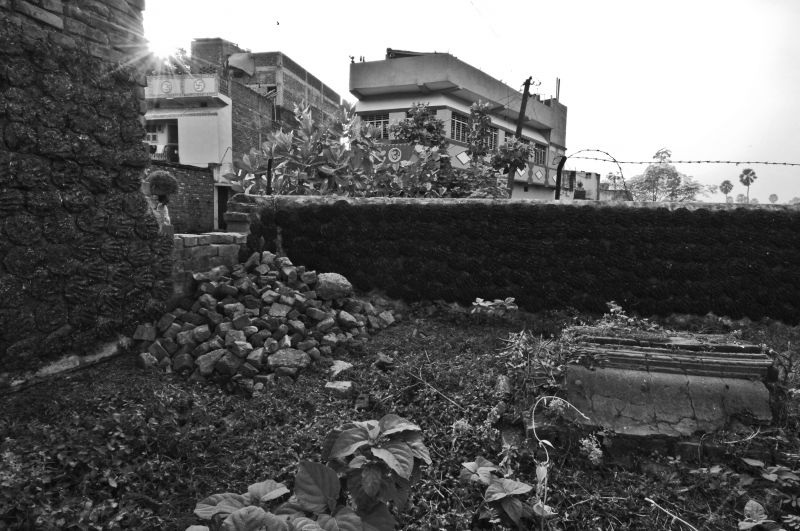
The derelict remains of the graveyard at Parbatti
The derelict remains of the Muslim graveyard at Parbatti, Bhagalpur which is now a grazing ground for livestock.
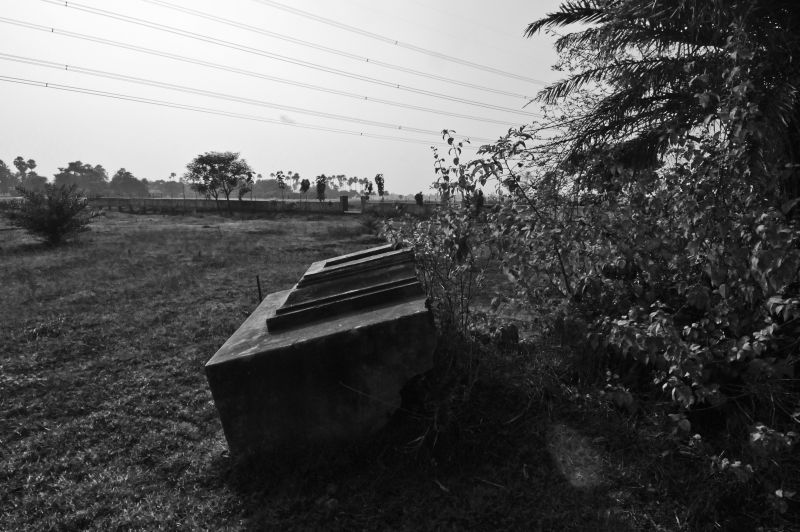
The graveyard at Timoni village is still disputed by both communities
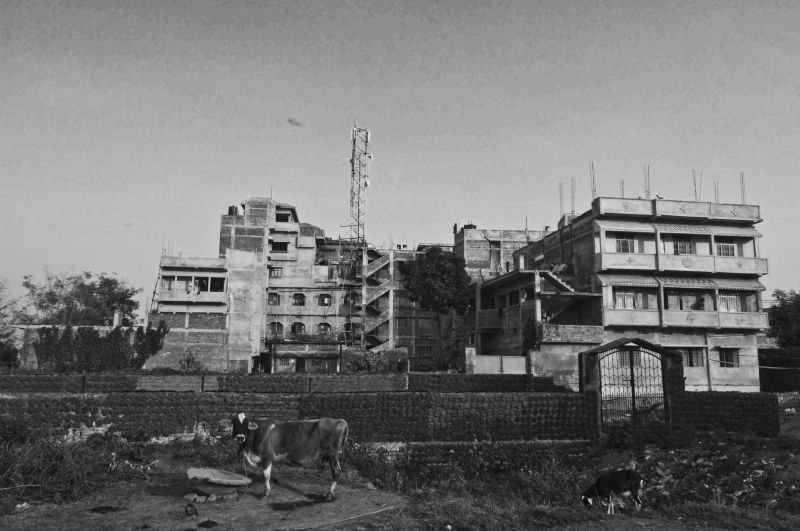
There is a very evident construction boom in Padbatti today, on what used to be the homes of
both upper class and working class Muslims.
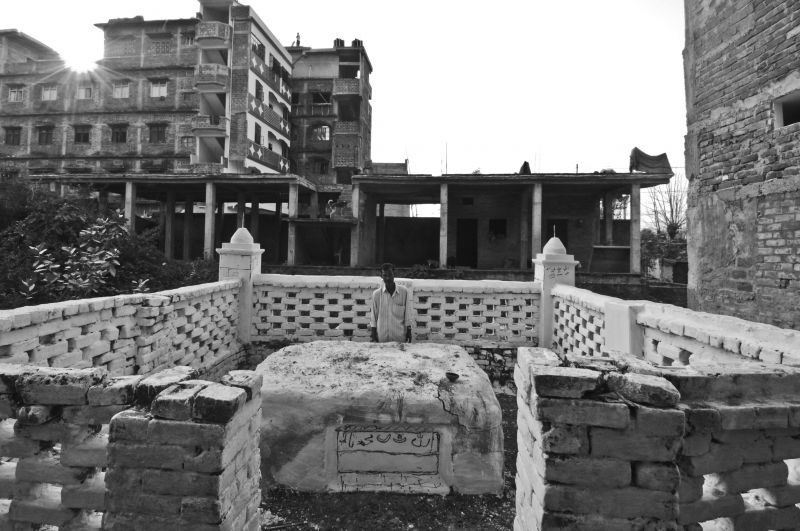
Mohammed Javed at the Mazhar at Padbatti, Bhagalpur Town.
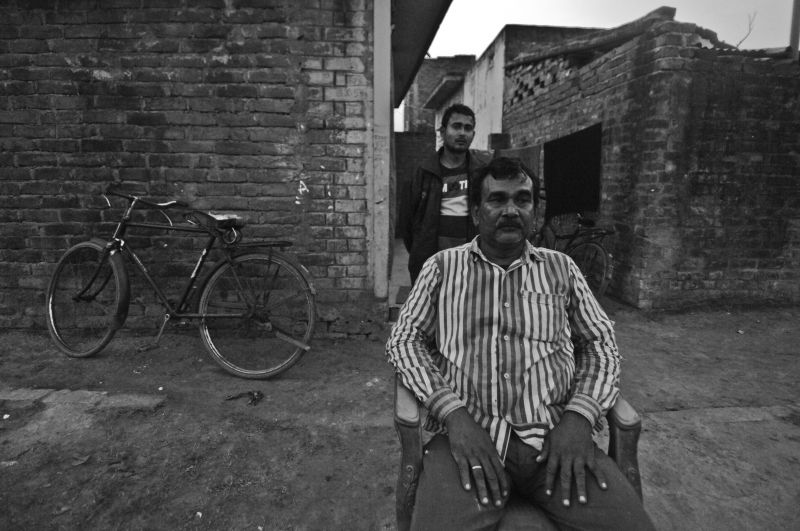
Mohammed Ilyaz was rounded up by the police and brutally tortured
Mohd Ilyaz was rounded up by the police in a house along with 38 other men where they were hiding from the riots. On this incident the Commission of Inquiry said: ‘The manner in which the search was conducted, was reminiscent of the searches in occupied Europe by the Nazis.’ All 38 were taken to a petrol station, beaten repeatedly by the police for an hour, made to sit on their knees, deprived of water, and constantly abused by 20 policemen for inciting the riots.
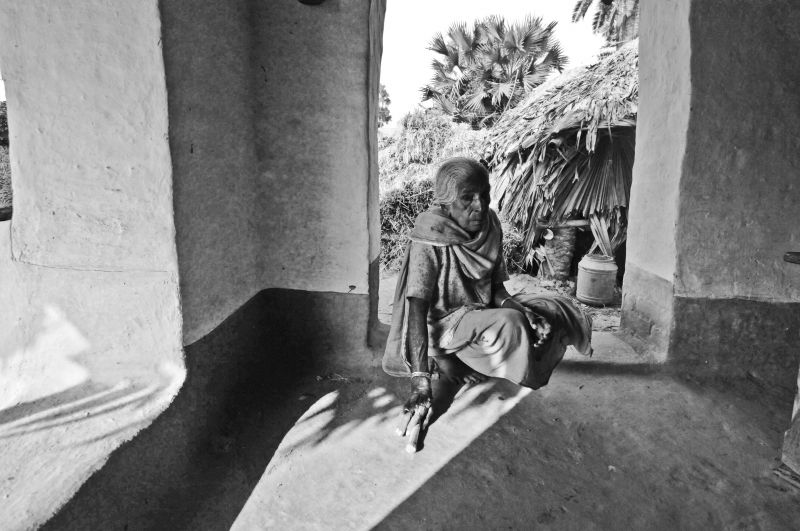
Jalebi Khatoon, from the only Muslim family still left in Logain village,
who claimed to have been married in the 1946 riots of Bhagalpur.
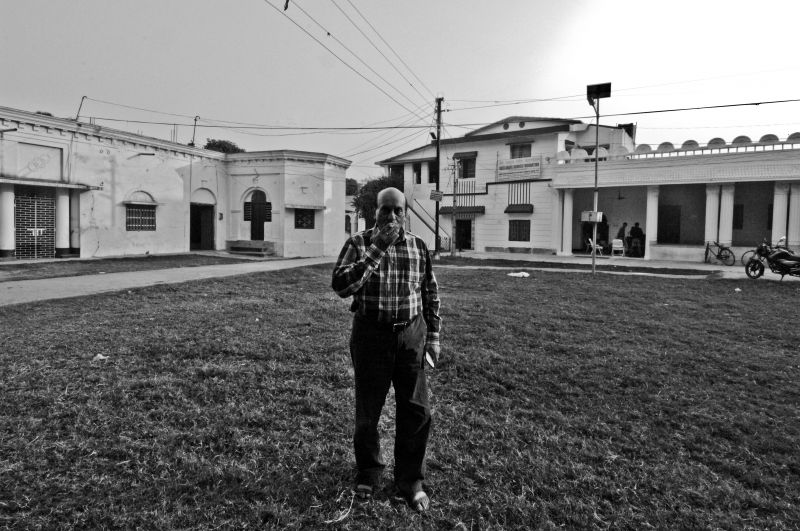
Mani Khan, a successful businessman started a relief camp and had over 10,000 people
living near his house and on his property in 1989.
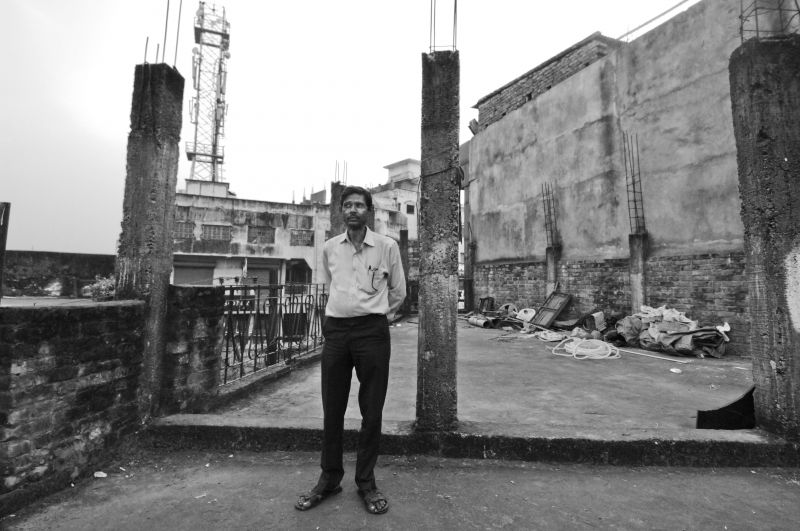
Kapil Dev Mandal
Kapildev Mandal was a witness at the inquiry commission and he testified that the procession was led by right-wing Hindu groups armed with swords, sticks, spears and pharsans. Kapildev sticks to his testimony even today, repeating that they were screaming slogans like ‘Baccha baccha Ram ka, baki sab haram ka.’ (all are children of Ram, everyone else is illegitimate), a slogan from 1989 that very recently was articulated into controversy when one of Prime Minister Narendra Modi’s ministers Niranjan Jyoti made a similar comment.
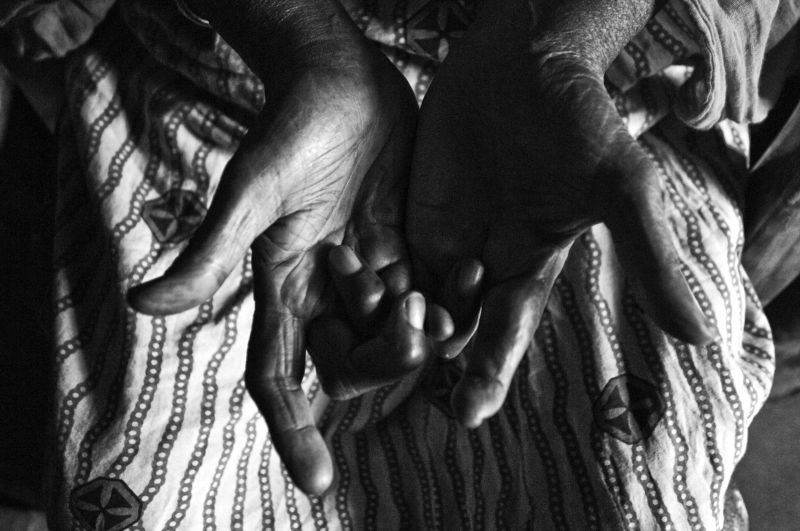
Bunni Begum's hands
Bunni Begum’s from Nayabazaar, 65, lost her fingers trying to push a sword away from her neck. They left her for dead and had killed her elder sisters Tameezul Nisa, 58, Chanda Begum, 50, and their caretaker Sachin, 15.
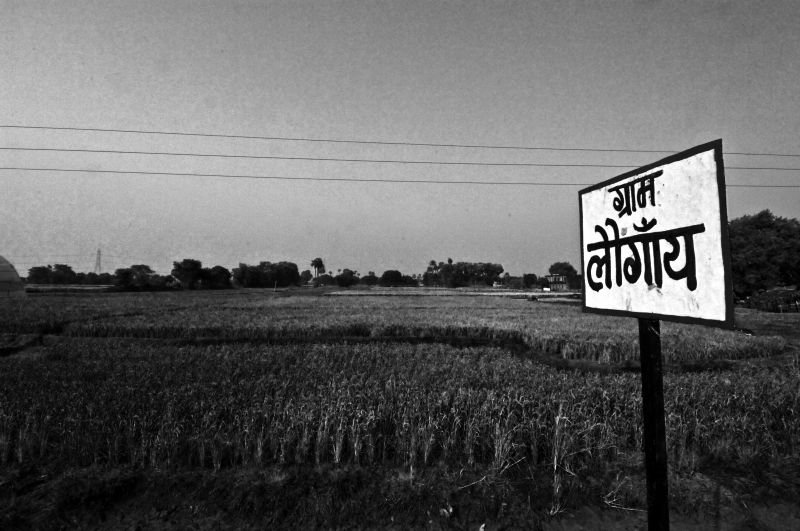
Javed Iqbal is a 30 year old freelance journalist and photographer from India.He worked as an investigative reporter for The New Indian Express from November 2009 to April 2011, and have contributed articles and photographs on the state-Maoist civil war, on human rights and social struggles, to Daily News & Analysis, The Sunday Guardian, Outlook Magazine, Al Jazeera, Fountain Ink Magazine, Tehelka, Yahoo News, India Today, Rediff News, Financial Times, Le Courier International, and Infochange. You can support his work by clicking here
.
Comments are moderated

